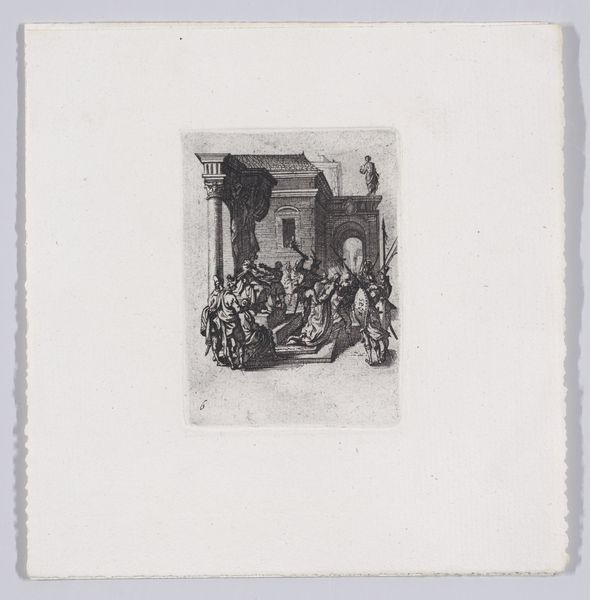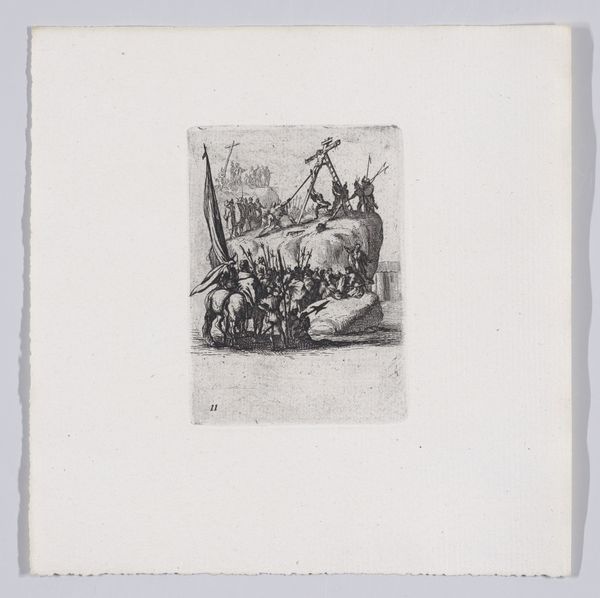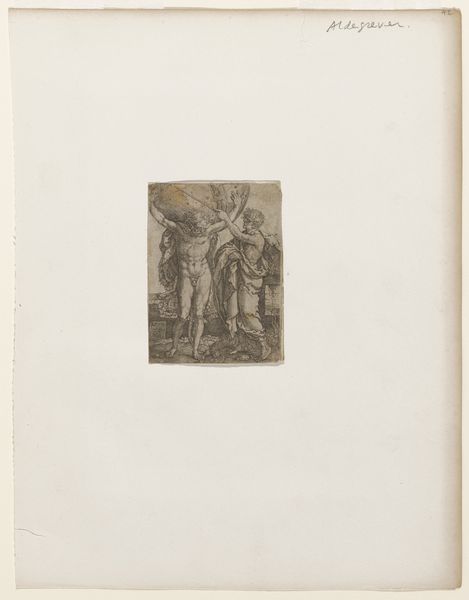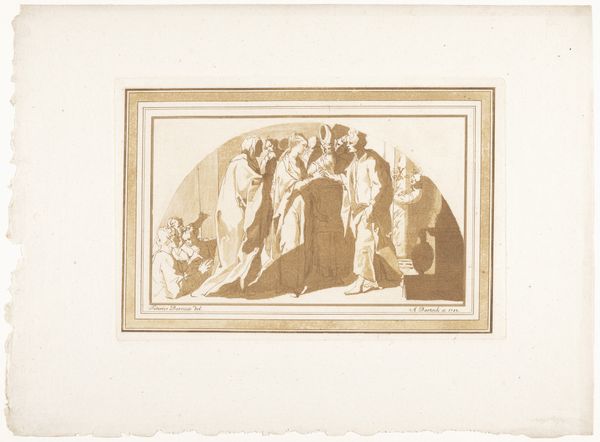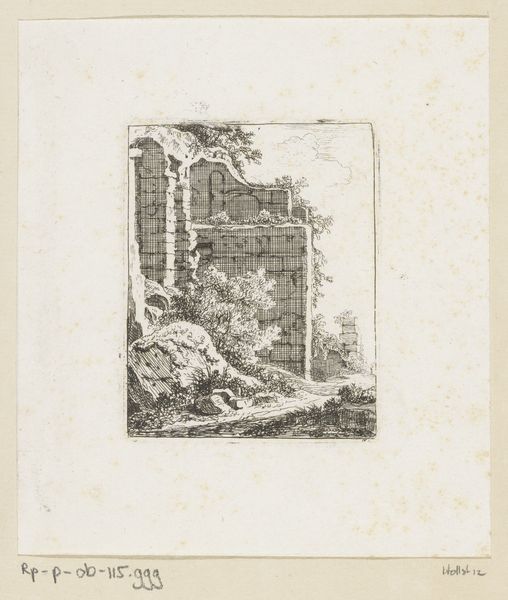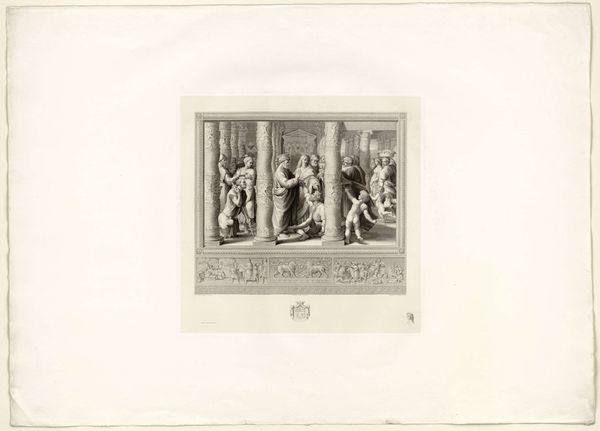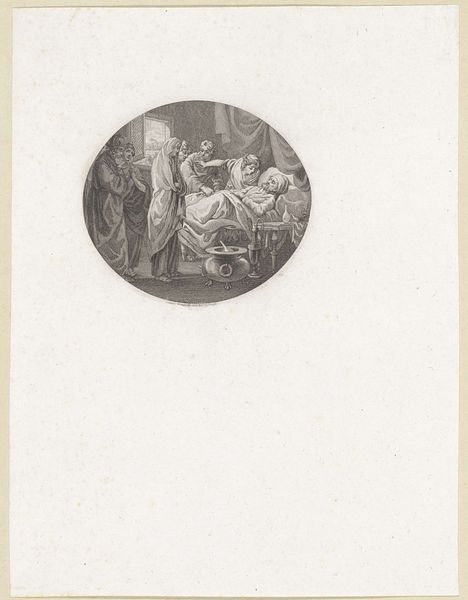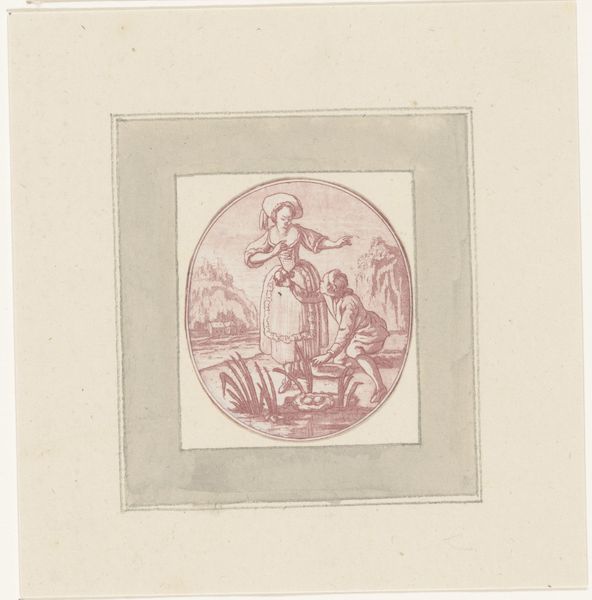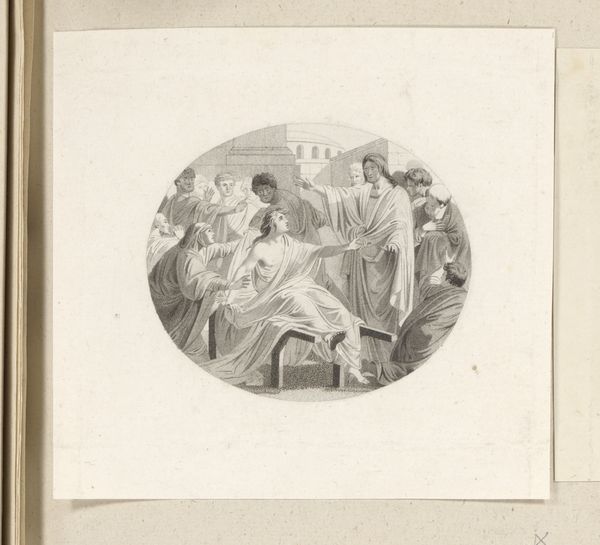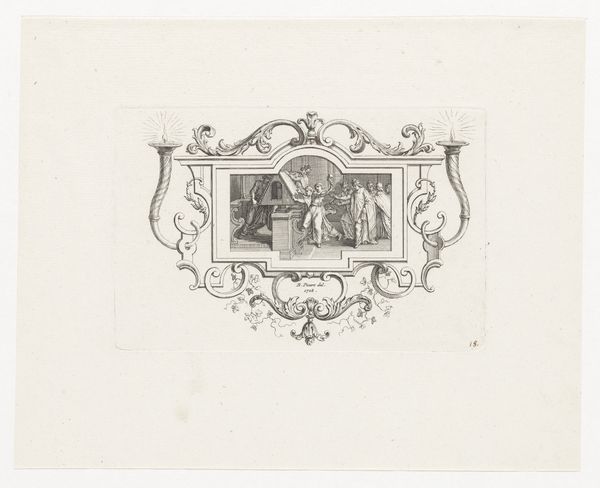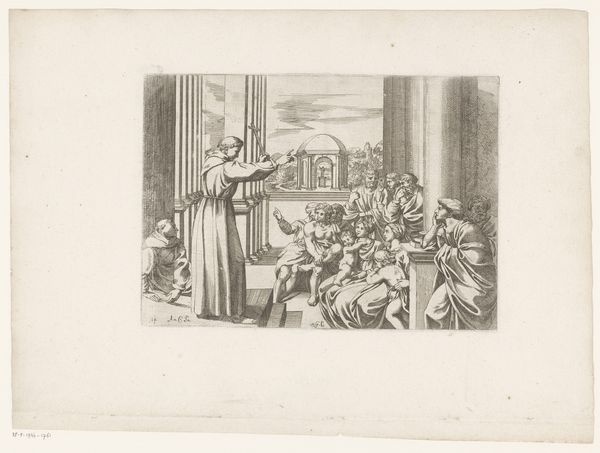
Reverse Copy of Jésus Comparait Devant Caiphe (Jesus Appears Before Caiaphas), from La Petite Passion (The Little Passion) 1624 - 1700
0:00
0:00
drawing, print, intaglio, engraving
#
drawing
#
narrative-art
#
baroque
# print
#
intaglio
#
personal sketchbook
#
history-painting
#
engraving
Dimensions: Sheet: 5 3/8 x 5 1/2 in. (13.6 x 13.9 cm) Plate: 2 15/16 x 2 3/16 in. (7.5 x 5.5 cm)
Copyright: Public Domain
Curator: Here we have an engraving from what's called The Little Passion, specifically, a reverse copy of "Jésus Comparait Devant Caiphe", or "Jesus Appears Before Caiaphas," dating sometime between 1624 and 1700. Editor: It strikes me as incredibly theatrical, almost like a stage set with the figures arranged for maximum dramatic effect. The contrast, while limited, emphasizes the main players. There’s a powerful, palpable tension here. Curator: The scene depicts Jesus’s trial before Caiaphas, the High Priest, an event laden with symbolic weight. Notice how the artist captures the agitation of the crowd versus the stoicism of Jesus. It’s not merely a historical depiction, but an exploration of power dynamics. Editor: Exactly. I think what’s interesting is how this one isolated moment in a political spectacle is re-framed. Consider the figures gesticulating wildly – what's implied through that sort of fervor and fury? The way Jesus is centered brings forth how dissent, disagreement, or blasphemy is criminalized and subsequently punished. Curator: That gesticulation is classic Baroque, channeling the emotions and beliefs in the drama unfolding. Look closer, and the artist directs us, through composition and shading, to the architectural elements towering above. These classical building allude to ideals of governance and law, even as it seems to be failing those ideals. Editor: Yes, the setting underscores that conflict. The architecture serves as an oppressive reminder of social hierarchies. What I gather from this imagery is an observation about power: that authority uses architecture to consolidate that power, in perpetuity, but also how easily manipulated those institutions of governance are through sheer anger and intimidation. It feels sadly timeless. Curator: And because this is a reverse copy, we also engage with an echo chamber of symbolism, layering meanings over time. A symbolic reproduction, it is also something of an emotional aftershock that’s experienced differently, with new nuances over time. Editor: It really drives home the dangers of unchecked authority, and it underscores the ease with which moral codes can be corrupted when tied to political agendas. This is such a chilling indictment, all told in such miniature scale. Curator: Seeing the social symbolism layered within a narrative print, in relation to its spiritual themes, certainly broadens my understanding. Thanks. Editor: Likewise! It makes you reflect on the echoes of similar injustices playing out today, doesn’t it?
Comments
No comments
Be the first to comment and join the conversation on the ultimate creative platform.
